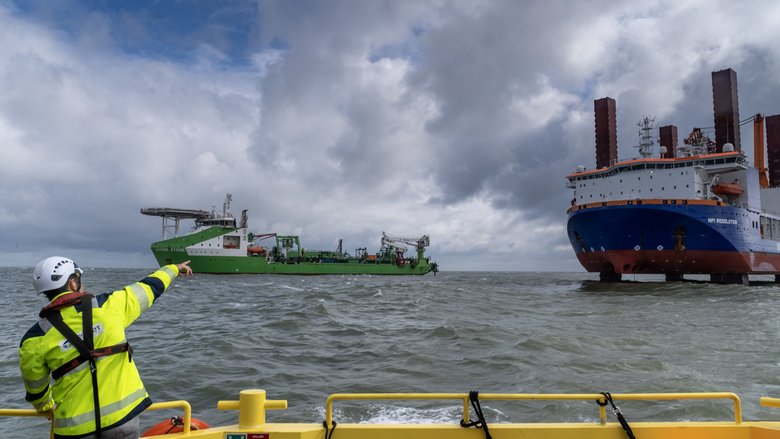Wind energy – cable installation
North of the Maasvlakte, TenneT is developing the Hollandse Kust (zuid) offshore grid for the connection of new wind farms.

Four offshore cables will be buried in the North Sea bed. For the first ten kilometres of the offshore cable route, these cables will be sunk 5.5 metres into the seabed to cross the busy Rotterdam Maasmond.
The first two cables were installed in September 2020 and now the remaining cables will follow. Tuesday the underwater robot Deep Dig-It has successfully crossed the Rotterdam Maasmond with the third cable and is now on its way to the recently installed Beta jacket in the Hollandse Kust (zuid) wind area.
The Van Oord – Hellenic Cables consortium is installing the two cables to the Beta platform. The interlinking cable, which connects the two offshore platforms, was already successfully installed at the Alpha and Beta jackets. The preparatory work was completed during the past few days. The cable that will be installed to the Beta jacket has been pulled ashore through the jackets to the newly built onshore transformer station on the Maasvlakte.
Now, the consortium combination will lay the cable with a total length of 34 kilometres to the wind area Hollandse Kust (zuid). Van Oord developed the Deep Dig-It, a gigantic, remote-controlled underwater trencher, especially for this project.
Van Oord’s Deep Dig-It is a Tracked Remotely Operated Vehicle (TROV) that travels on the seabed unmanned, making a deep trench for the cables by liquefying the seabed. At the same time, this underwater trencher lays the cables in the trench and closes it. The Beta cables weigh approximately 100 kilograms per metre and consist of three cores. These three cores are made of aluminium and the cable has a diameter of 30 centimetres.
Both cables were loaded onto spools on DEME Offshore’s cable vessel Living Stone. This vessel runs on liquid gas (LNG), which reduces emissions. The installation of the 34 kilometres of cable route will take about four weeks and is expected to be completed by mid-September.
At the end of this year, the topside, the transformer station itself, will be lifted onto the Alpha jacket. The topside of the Beta jacket is expected to follow early next year. Once the platforms have been lifted onto the jacket, the last systems will be connected, tested and put into operation.
The cables of the wind turbines will then be connected to the high voltage substation on land and the wind farm is expected to be fully operational in 2023.


